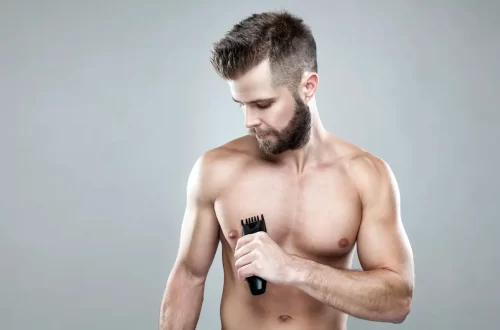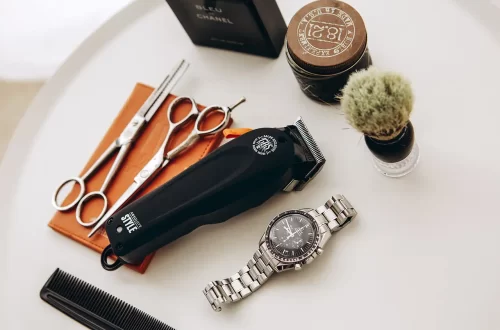
Stop Hair Loss Now: Effective Hair Loss Solutions for Men
Hair thinning is a common concern among men, whether it’s a recent issue or something you’ve been battling for years. Fortunately, there are effective hair loss solutions for men that can make a real difference. Two prominent treatments—minoxidil and finasteride—have proven to be powerful allies in the fight against hair loss. Let’s dive into these solutions, explore their effectiveness, and discuss when and how to use them. We’ll also address any concerns you might have and take a closer look at the broader medical applications of finasteride.
Minoxidil: The Topical Companion for Hair Regrowth
Minoxidil, widely recognized by its brand name Rogaine, is one of the most effective hair loss solutions for men available over the counter. This topical treatment comes in both liquid and foam forms and is applied directly to the scalp. Minoxidil works by improving blood flow to the hair follicles, which can help stimulate hair growth.
Minoxidil is particularly beneficial for men experiencing thinning hair on the crown of their head or those noticing a widening part. Consistent application of minoxidil can lead to noticeable improvement in hair density over time. While it might not work miracles overnight, many men find it a valuable tool in their hair care routine.
Finasteride: Tackling Hair Loss at the Hormonal Level
Finasteride, known commercially as Propecia, is another effective hair loss solution for men—but with a different approach. Unlike minoxidil, which you apply topically, finasteride is an oral prescription medication. It works by inhibiting the conversion of testosterone into dihydrotestosterone (DHT), a hormone closely linked to hair thinning and loss.
By lowering DHT levels, finasteride not only helps slow down hair loss but can also promote regrowth in some cases. What makes finasteride particularly interesting is its dual-purpose nature; it’s also used to treat an enlarged prostate, making it a versatile option for those dealing with both issues.
When to Consider Minoxidil and Finasteride
Deciding when to start using minoxidil or finasteride—or both—depends largely on the stage of hair thinning you’re experiencing and your personal preferences.
For men who have just started to notice thinning, minoxidil can be a great first step. It’s non-prescription, easy to use, and has a track record of helping with early-stage hair loss. If you’re dealing with more advanced thinning or if hormonal factors are a concern, finasteride may be the better option. Combining both treatments can also be an effective strategy, offering a comprehensive approach to tackling hair loss from different angles.
Effectiveness: What to Expect from These Treatments
When evaluating the effectiveness of hair loss solutions for men, it’s essential to have realistic expectations. Minoxidil often shows results after about three to six months of consistent use. Some men experience significant regrowth, while others may notice only moderate improvement.
Finasteride, on the other hand, tends to be more effective in preventing further hair loss and may even stimulate some regrowth. However, like minoxidil, it requires patience—results can take up to six months or more to become noticeable.
Understanding the Potential Side Effects
Before diving into these treatments, it’s important to be aware of possible side effects. Minoxidil is generally well-tolerated, but some men may experience scalp irritation. In rare cases, it can cause unwanted hair growth in other areas of the body, like the face or hands, where the product may accidentally spread.
Finasteride, while generally safe, has been associated with side effects such as a decreased libido or erectile dysfunction. These side effects are not common but can be concerning for some men. Discussing these possibilities with your healthcare provider is crucial to making an informed decision.
Exploring Additional Hair Loss Treatments
While minoxidil and finasteride are prominent solutions, other treatments also offer promising results. One such option is hair transplant surgery, a procedure where hair follicles are moved from one part of the body to the thinning or balding areas. This method provides a more permanent solution and can yield natural-looking results. However, it requires a significant investment of time and money, and the recovery period can vary.
Another avenue to consider is low-level laser therapy (LLLT). This non-invasive treatment uses laser devices to stimulate hair growth by enhancing blood flow to the scalp. Available in various forms, such as combs, helmets, and caps, LLLT can be used at home or in clinical settings. While research on its effectiveness is ongoing, many users report positive outcomes.
Platelet-rich plasma (PRP) therapy is also gaining traction as a hair loss treatment. In this procedure, a patient’s blood is drawn, processed to concentrate the platelets, and then injected into the scalp. The growth factors in the platelets are believed to stimulate hair follicles and promote regrowth. PRP therapy is typically performed in a series of sessions and has shown promising results in clinical studies.
For those seeking a more holistic approach, nutritional supplements and dietary changes can play a role in hair health. Vitamins and minerals such as biotin, zinc, and iron are essential for hair growth. Ensuring a balanced diet rich in these nutrients can support overall hair health and potentially reduce hair thinning.
Lastly, topical treatments like ketoconazole shampoo, which has anti-fungal properties, can help reduce scalp inflammation and improve hair density. Combining these treatments with a healthy lifestyle and proper hair care routine can enhance their effectiveness.
Final Thoughts on Effective Hair Loss Solutions for Men
In the quest for effective hair loss solutions for men, minoxidil and finasteride stand out as powerful tools. Whether you’re at the beginning of your hair loss journey or have been facing it for years, these treatments offer a way to regain control and confidence. However, they are not the only options available. Hair transplant surgery, low-level laser therapy, platelet-rich plasma therapy, and nutritional supplements also provide viable alternatives.
The best course of action is to consult with a healthcare professional who can guide you toward the right solution based on your unique situation and concerns. Remember, while these treatments can be highly effective, they require commitment and patience. By taking proactive steps and choosing the right solution, you can make a significant difference in your hair health and overall confidence.





